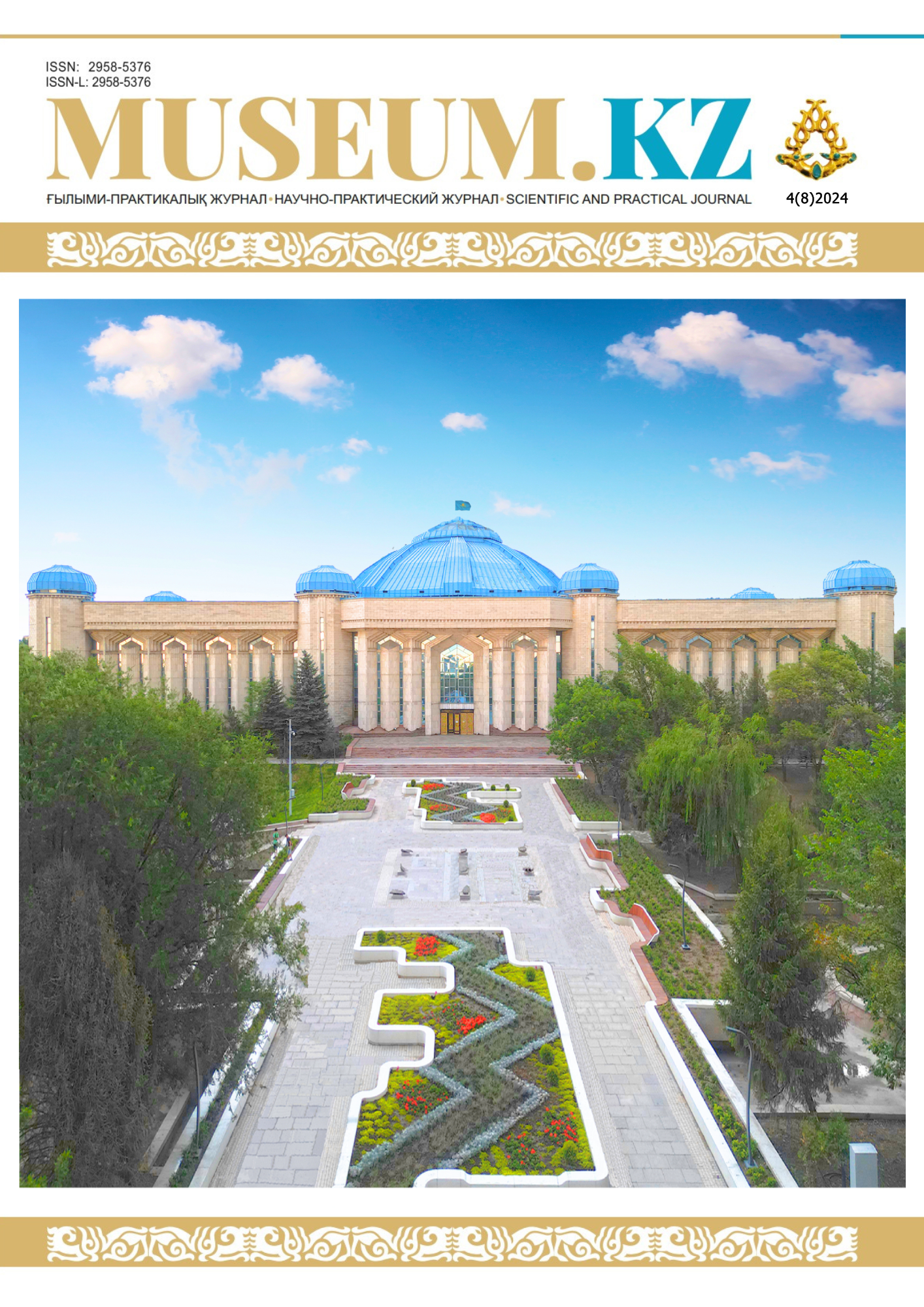THE HISTORY OF THE ARCHAEOLOGICAL AND ETHNOGRAPHIC STUDY OF THE KEGEN RIVER VALLEY
DOI:
https://doi.org/10.59103/muzkz.2024.08.01Keywords:
Kegen, kurgan, burial ground, ethnoarchaeology, expedition, Zhetysu, Komirshi tract, the museumAbstract
Abstract. The article presents the history of the study of the Kegen Valley from the end of the XIX century to the present. The purpose of the study is to analyze published studies, archival sources, as well as compare them with modern materials to get an idea of the monuments already studied. The relevance of historiographical research is the systematization of archaeological materials of the Kegen Valley.
The results of the research of the monuments of the Kegen Valley conducted in 1979- 2023 by the archaeological expedition of the Central State Museum of the Republic of Kazakhstan, together with the results of earlier studies, proving that the monument is characterized by special uniqueness and rarity: the layering of several cultural and historical layers, including monuments from the sites of primitive people to monuments of urban culture of the Middle Ages. New archaeological, ethnographic, historical and other materials obtained as a result of studies of the monuments of the Kegen Valley allow us to reveal the features of the historical processes of Zhetysu in the context of highlighting the development of material and spiritual culture from ancient times (Paleolithic) to modern times. During the work, special attention was also paid to the accounting documentation as a museum source, reflecting the history of the formation of collections, as well as other aspects of the existence of objects in museum collections.







